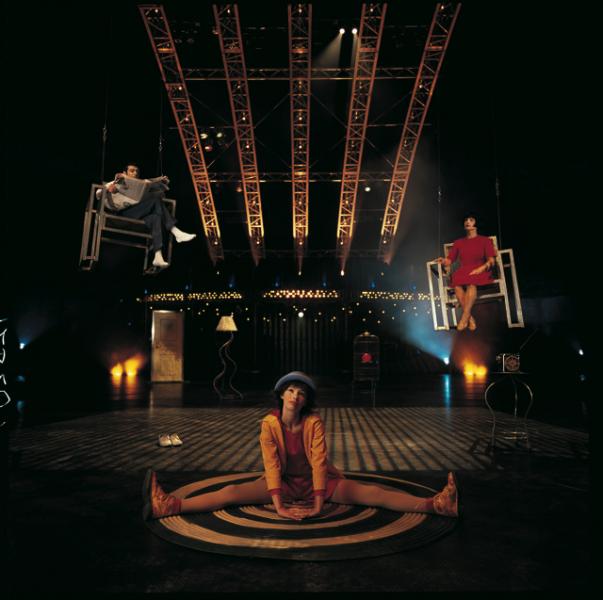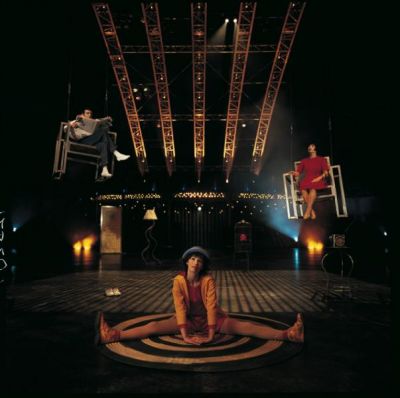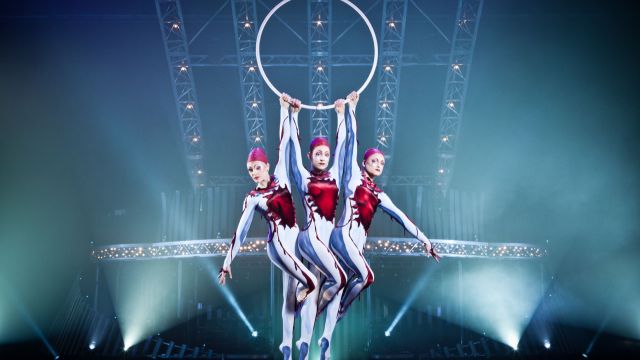Quidam
If you have seen Cirque du Soleil even on television, you know to expect something grand and memorable. But there’s nothing like being there in the flesh. And Quidam, a production nearly as old as the troupe itself, didn’t let us down. Aiming not to take us into other worlds but to let us enter the world of its protagonist’s imagination, it nonetheless left us with an impression of having viewed everyday friends and strangers as though from the perspective of another realm.
Invocation of a sense of low-key mysticism is almost a hallmark of the company’s productions, and Quidam is no exception in that regard. And this mystical quality in its performances is helped along by their sheer artistry: the choreography of every entrance and exit, appearance and disappearance, interaction and separation, for a seamless whole; the care and precision with which it all occurs; the spot-on coordination between various performers; the unbelievable skills they exhibit.
Cirque du Soleil is unexcelled in the world of artistic gymnastic storytelling, and Quidam hits the spot at which childlike wonder and adult appreciation for the sublime overlap.
The story that nominally ties the various circus acts together is altogether too simple and (deliberately) versatile to necessitate the appearance of any particular act in satisfying anything as convoluted as a plot requirement; but the acts require no such justification. Each is amazing in its own right, either for its acrobatic elegance or for its whimsical appeal or for its delightful sense of fun; and mostly for all of these together. From its opening by its director—a wordless opening taking advantage of several hapless audience members—to the grand finale preceding its double curtain call, the show was an uninterrupted series of amazements, many of which occurred between formal acts and some of which were clearly unscripted.

 One act full of such unscripted delights was the making of a film using audience members as cast and crew. When the reluctance of two of the “cast” to play their romantic roles caused the film’s “director” to take matters into his own hands, he showed them how it’s done before an audience of thousands, with hilarious results. And it was impossible for “cast” members to remain shy in the face of the massive audience support for their efforts.
One act full of such unscripted delights was the making of a film using audience members as cast and crew. When the reluctance of two of the “cast” to play their romantic roles caused the film’s “director” to take matters into his own hands, he showed them how it’s done before an audience of thousands, with hilarious results. And it was impossible for “cast” members to remain shy in the face of the massive audience support for their efforts.
Did I have favourite acts? Yes, I did. The diabolo (Chinese yo-yo) play must have taken its soloist many years to perfect. A series of coordinated and sometimes incredibly rapid moves with skipping ropes ended in a stage full of simultaneously rotating ropes and rope jumpers intermingling with intricate beauty. The closing banquine, tossing humans a long way—even to the top of an already towering human pyramid—defied belief.
Other acts, though, were heart-stopping in their apparent danger, with performers casually letting themselves fall many metres, or in their elegance, as in a sequence of challenging acrobatic balances that in other circuses would merely show off strength but here instead showed beauty of form.
And the music itself—which a seven-piece band played and sang, live, to utter perfection—was, as usual, out of this world.
Words can’t do it; only attending a production will convey the sublimity of the apparently impossible acrobatics, of the soulful coordination of action with beautiful original music, of seeing in the utterly strange our own humanity. And Quidam has become a classic in that juxtaposition of the melancholy and the hilarious, of stillness and dynamism, of the real and the fantastic, that makes for world-class circus.
John P. Harvey
Images: Cirque du Soleil, in Quidam. Photographers: Matt Beard (top) and Al Seib (lower). Costumes: Dominique Lemieux.
Subscribe to our E-Newsletter, buy our latest print edition or find a Performing Arts book at Book Nook.

